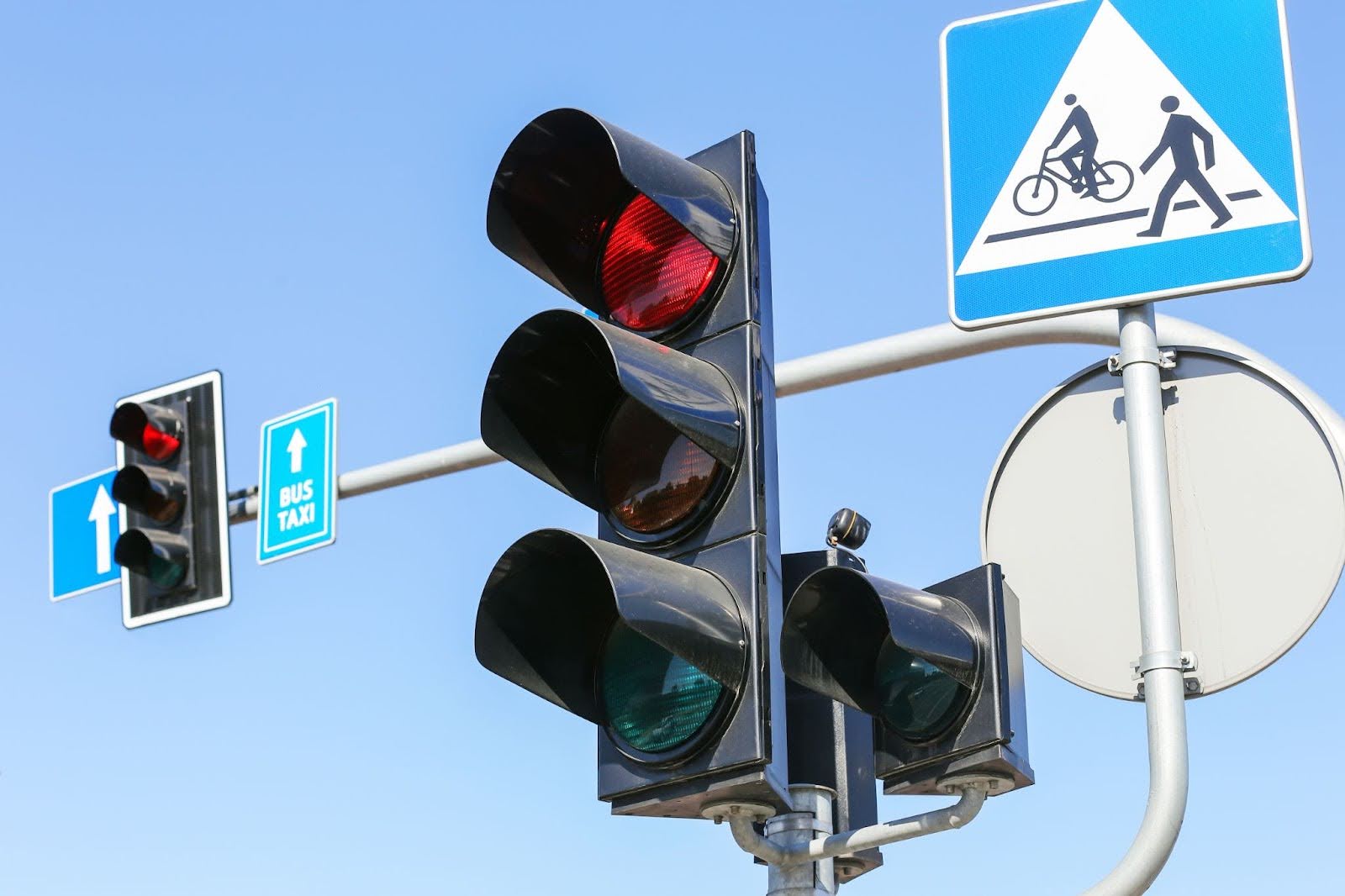A smart traffic management system uses video detection, adaptive signals, V2X communication, and cloud analytics to improve traffic flow and reduce congestion. These systems support intelligent mobility, leveraging data, connectivity, and automation to transform how people and goods move through cities.

Key Components of Smart Traffic Management
Smart traffic management systems rely on a blend of intelligent mobility technologies that monitor, analyze, and respond to real-time traffic conditions. These systems include the following, outlined below.
Video Detection Systems
Video detection systems are the eyes of smart traffic infrastructure. Installed at intersections and along major corridors, these cameras continuously monitor vehicle movement and traffic density. Miovision offers a solution called Detection Plus, combining the benefits of Detection and Continuous Counts. Here’s how Video Detection Systems help streamline traffic flow in complex urban settings:
- Detect congestion and queue lengths instantly
- Provide real-time data to optimize traffic signal timings
- Improve traffic flows by identifying patterns and anomalies
Adaptive Traffic Signals Technology
Unlike fixed-time traffic lights, adaptive traffic signals technology uses real-time data to adjust signal timing based on actual traffic patterns. Miovision stands out in adaptive technology by offering real-time, second-by-second dynamic adjustments, unlike competitors that rely on historical data. Our decentralized approach ensures seamless scalability, making Miovision a more efficient and flexible solution.
Here’s how it works:
- Adjusts cycle lengths in response to peak-hour traffic
- Prioritizes public transit and emergency vehicles when needed
- Reduces unnecessary delays and idle time
- Supports better traffic signal timing during fluctuating conditions
Adaptive traffic systems are particularly useful in high-traffic urban zones and smart city corridors where traffic conditions change constantly.
V2X Communication
V2X (Vehicle-to-Everything) communication enables vehicles to exchange real-time data with traffic signal networks, creating a connected transportation ecosystem for enhanced mobility and safety through:
- Warnings for drivers to avoid potential collisions and traffic violations.
- Provision of traffic signal timing information for drivers to reduce friction.
- Alerts drivers to approaching emergency vehicles and road hazards.
- Collection of vehicle-based data for targeted safety interventions.
By using cutting-edge technologies, Miovision’s smart traffic management systems help build more efficient cities and responsive, sustainable transportation networks.
FAQ
How does smart traffic management reduce congestion?
It uses tools like adaptive signals and cloud analytics to optimize traffic flow and prevent bottlenecks.
Is smart traffic management environmentally friendly?
Yes. Reducing idling and improving traffic flow helps decrease emissions.
What technologies are used in smart traffic management?
Smart traffic management leverages technologies like AI, IoT sensors, video detection, and cloud computing to monitor and improve traffic flow effectively.
Can smart traffic management systems work in all cities?
Yes, these systems are scalable and can be tailored to meet the needs of any city, from small towns to large urban areas.
How does smart traffic management improve road safety?
It uses real-time data to adjust traffic signals, reduce congestion, and prevent accidents, creating safer conditions for drivers, cyclists, and pedestrians.



